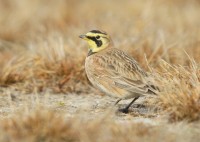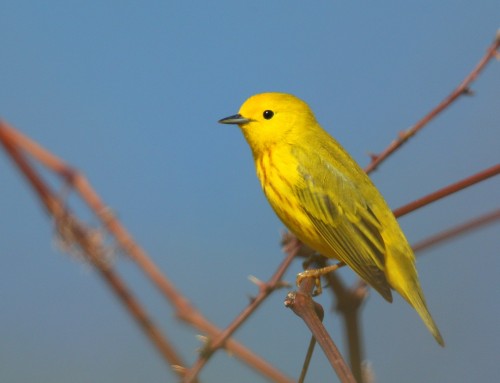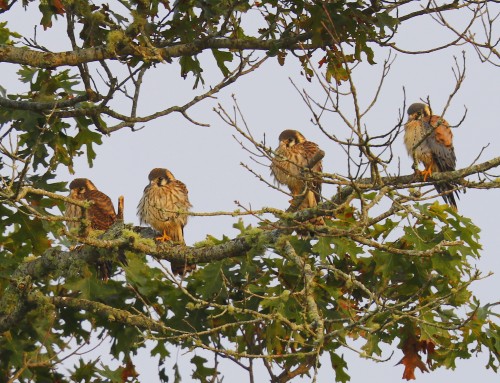 Horned Larks are frequently found nest to the shoulders of gravel and dirt roads and trails, where they forage for seeds. In the winter they also look for snow free openings along beaches and roads. A bit larger than a House Sparrow, the Horned Lark has pale brown upperparts and white underparts. The face and throat are pale yellow and black along with a black crown and tiny horns. The Horned Lark is a very vocal bird singing from all locations. This Horned Lark was seen recently along one of the trails at Crane Wildlife Management Area off of Rt. 151 in Falmouth.
Horned Larks are frequently found nest to the shoulders of gravel and dirt roads and trails, where they forage for seeds. In the winter they also look for snow free openings along beaches and roads. A bit larger than a House Sparrow, the Horned Lark has pale brown upperparts and white underparts. The face and throat are pale yellow and black along with a black crown and tiny horns. The Horned Lark is a very vocal bird singing from all locations. This Horned Lark was seen recently along one of the trails at Crane Wildlife Management Area off of Rt. 151 in Falmouth.







Leave A Comment
You must be logged in to post a comment.